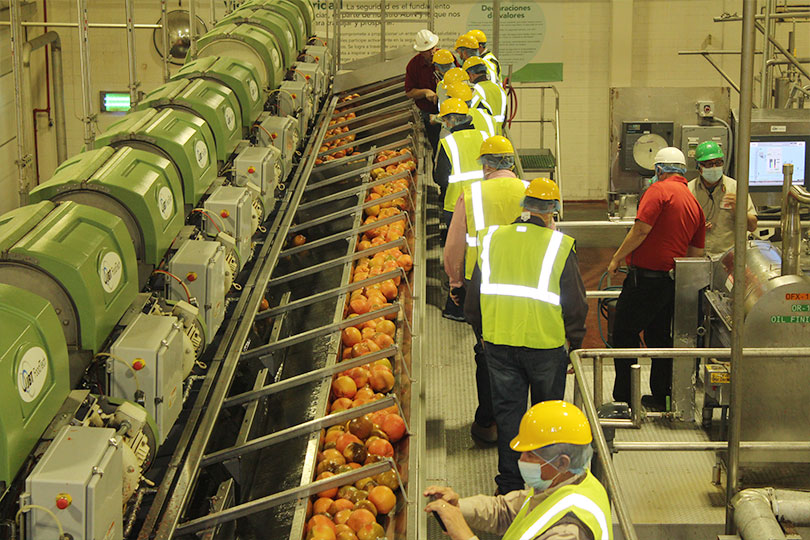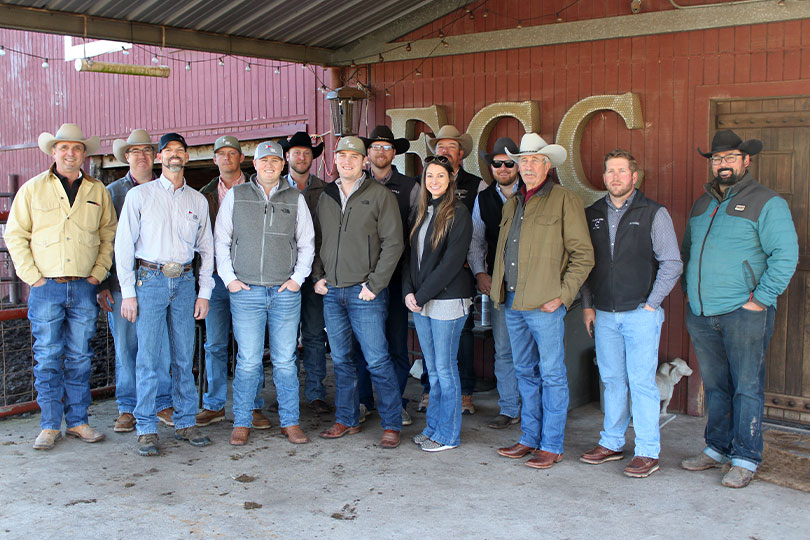By Julie Tomascik
Editor
Texas Farm Bureau’s AgLead XV class returned home with new connections and fresh perspectives from a four-day trip to the Rio Grande Valley last month.
The trip gave AgLead members a chance to connect and engage with other farmers and ranchers from across the Lone Star State. They discussed issues, ideas and the common challenges they all face, as well as the unique challenges farming in the Valley brings.
“AgLead participants were able to learn a lot about various agribusinesses, shipping commodities and water infrastructure, as well as farming and ranching along the U.S.-Mexico border,” said Roger Hall, associate director of Organization, Leader Development.
The Valley offers a unique climate for vegetables to be grown year-round. Farmers in the Valley are also the first in the state and nation to begin planting crops like corn, grain sorghum and cotton.
But it’s not just the climate and crops that are special to the area. The water infrastructure in the Valley is also unique. The Rio Grande River is the lifeblood of farmers in that region, and without it, they wouldn’t be able to grow crops.
The group was able to see how different irrigation systems work and toured a farm that uses pumps to water their crops directly from the Rio Grande River. Farmers in that region have to maintain irrigation and plan for how much water they will be allocated to ensure they have enough for their crops.
AgLead members also visited several farms and ranches during the trip, including Rio Farms and England Cattle Company.
“We saw some good cattle at England Cattle Company. They are commercial cattle breeders and also purebred breeders, so that adds a lot of depth and integrity to their program,” Clayton Conway, AgLead participant and rancher from Van Zandt County, said.
The group toured the Port of Corpus Christi, the only sugar mill in Texas, a citrus orchard, packing facilities and a juice plant during the trip.
“We toured the facility at Rio Grande Juice Company. They use the entire grapefruit—all the way from making grapefruit juice to cattle feed,” Hailey Hayes, an ag teacher and farmer from Calhoun County, said.

Visiting the Valley also allowed the farmers and ranchers to see how agriculture is different in that region of the state than their own operations.
“Down there, they grow crops all year round. They grow some of the fruits and vegetables we see at the grocery store,” Hayes said. “The Valley isn’t far from us in Calhoun County—just a few hours away. But it’s so much more diverse and such a big part of Texas agriculture.”
Hayes plans to take back the information she learned to the students in her classroom.
“I want to show them all the different things that make the Valley unique when it comes to agriculture. Sugarcane—do students know that’s how they get sugar? I want them to have a better understanding of the process of food from the field and the steps it goes through before it gets to our plate,” she said.
The Valley’s proximity to Mexico and international borders plays a key role in Texas agriculture.

“We toured the border and had the opportunity to talk to some people who were involved with the problems down there. It’s a very serious problem,” Conway said. “I have a better understanding of the issue at the border and learned more about the ag labor needs, especially in the Rio Grande Valley.”
The trip was held Feb. 7-10. The group is scheduled to visit Washington, D.C. in April.
For more information on AgLead, visit texasfarmbureau.org/aglead.

